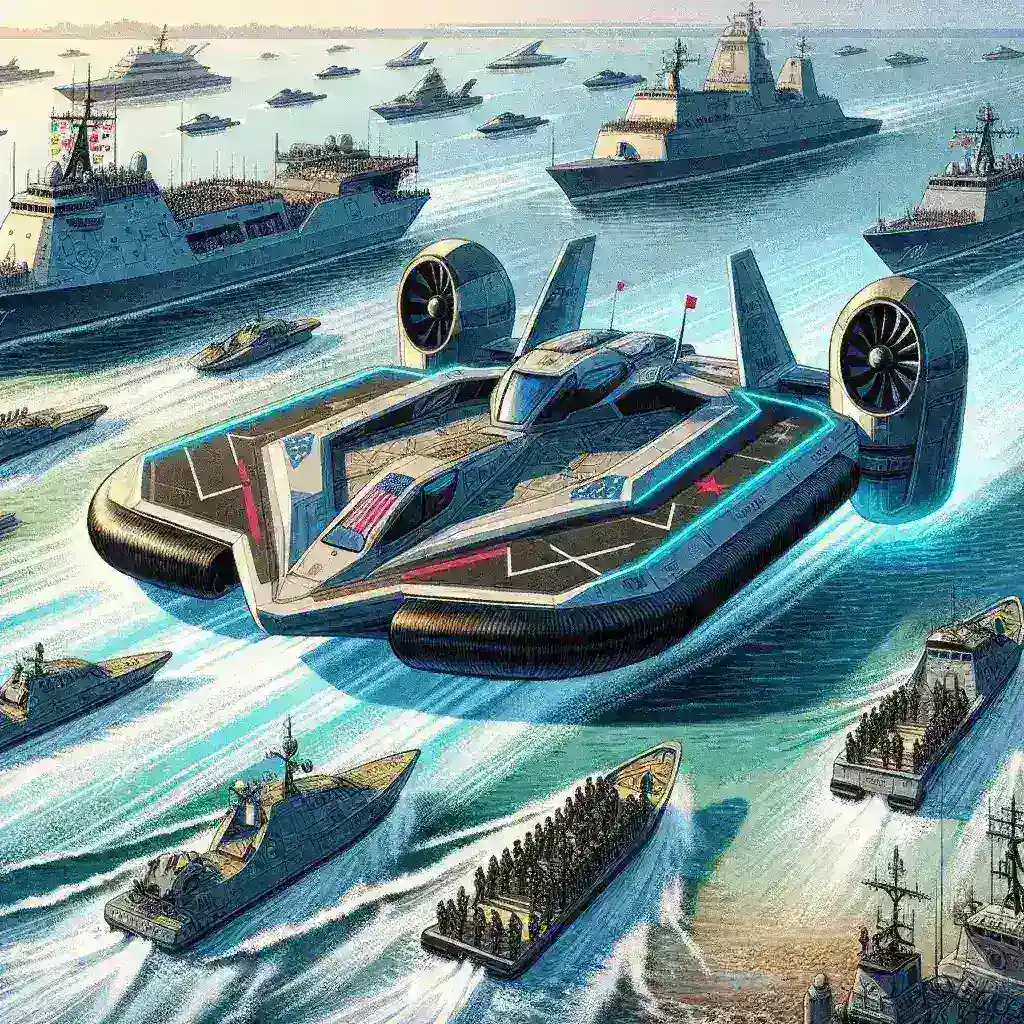Introduction
In recent years, the military landscape has undergone significant changes, with a renewed focus on hovercraft technology. This revival is not just a technological advancement; it is reshaping naval strategies, particularly between the United States and China. As both countries seek to enhance their maritime capabilities, hovercraft are emerging as vital assets in modern warfare.
The Rise of Hovercraft Technology
Hovercraft, or air-cushion vehicles, have been around since the 1960s, originally designed for versatile transport over land and water. However, their military applications have gained traction in the context of modern naval warfare. The unique capability of hovercraft to traverse different terrains, including shallow waters and beaches, makes them ideal for amphibious operations.
Historical Context
Historically, hovercraft were primarily used in military logistics during the Cold War, especially by the Soviet Union. As military strategies evolved, so did the applications of hovercraft. The Gulf War saw their limited use, but it wasn’t until recent geopolitical tensions that these vehicles regained prominence.
Current Developments in the US
The United States Navy has recognized the strategic importance of hovercraft in expeditionary operations. The introduction of the Landing Craft Air Cushion (LCAC) has allowed US forces to project power and deliver troops and equipment efficiently. The Navy’s commitment to modernizing its fleet includes plans to upgrade existing hovercraft and invest in new technologies that improve speed, range, and operational capability.
China’s Strategic Interest
China, too, has intensified its focus on hovercraft technology. The People’s Liberation Army Navy (PLAN) has been developing its own models, such as the Type 726 hovercraft, designed for rapid amphibious assaults. These advancements are part of China’s broader strategy to enhance naval capabilities in the South China Sea and beyond.
Impact on Naval Strategies
Amphibious Operations
Both the US and China are enhancing their amphibious assault strategies through the use of hovercraft. The ability to quickly transport troops and supplies across challenging terrains is crucial in modern conflict scenarios. This capability enables forces to conduct surprise attacks and capitalize on weaknesses in enemy defenses.
Surveillance and Reconnaissance
Hovercraft are also being adapted for surveillance roles. Their ability to move quickly and access shallow waters makes them ideal for maritime reconnaissance missions. Both nations are exploring the integration of drones and sensors into hovercraft for enhanced situational awareness.
Pros and Cons of Hovercraft in Military Use
Advantages
- Versatility: Hovercraft can operate over various terrains, making them suitable for diverse mission profiles.
- Speed: They can traverse water at high speeds, reducing response times during operations.
- Logistics: Hovercraft facilitate the rapid movement of troops and equipment, enhancing operational efficiency.
Challenges
- Vulnerability: Hovercraft may be susceptible to enemy fire, especially when operating in contested areas.
- Maintenance: The complex engineering of hovercraft requires significant maintenance, which can be a logistical burden.
- Cost: Development and acquisition costs for advanced hovercraft can be high, raising budgetary concerns.
Future Predictions
As the US and China continue to develop their hovercraft capabilities, we can expect to see several trends:
- Increased Investments: Both nations will likely increase funding for hovercraft research and development, focusing on enhancing their operational effectiveness.
- Joint Exercises: Collaborative training exercises may become more common as both nations test and refine their hovercraft capabilities.
- Technological Innovations: Future hovercraft designs may incorporate advanced materials and propulsion systems, further expanding their capabilities.
Conclusion
The military revival of hovercraft is undeniably stirring the naval strategies of both the United States and China. As these nations invest in and innovate hovercraft technology, their military doctrines will shift to accommodate the unique advantages these vehicles offer. The implications for global military dynamics are vast, potentially reshaping power balances on the world stage.
Expert Insights
According to military analyst Dr. Jane Smith, “The resurgence of hovercraft in naval strategies underscores a critical evolution in how modern warfare is approached. As nations adapt to new challenges, the versatility of hovercraft will be a game-changer for amphibious operations in the coming years.”
Final Thoughts
In a rapidly changing global landscape, the strategic significance of hovercraft cannot be overstated. As the US and China continue to innovate and expand their military capabilities, one thing is clear: hovercraft will be at the forefront of their naval strategies, influencing operations and engagements for decades to come.

